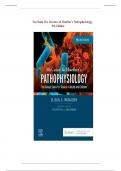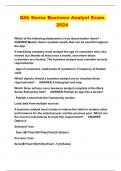Exam (elaborations)
TEST BANK- Mccance & Huether’s Pathophysiology( 9th Edition 2024)_ALL Chapters (1-49 )INCLUDED|| COMPLETE SOLUTIONS|A GRADED VERIFIED SUCCESS !!
TEST BANK- Mccance & Huether’s Pathophysiology( 9th Edition 2024)_ALL Chapters (1-49 )INCLUDED|| COMPLETE SOLUTIONS|A GRADED VERIFIED SUCCESS !!TEST BANK- Mccance & Huether’s Pathophysiology( 9th Edition 2024)_ALL Chapters (1-49 )INCLUDED|| COMPLETE SOLUTIONS|A GRADED VERIFIED SUCCESS !!TEST BA...
[Show more]




